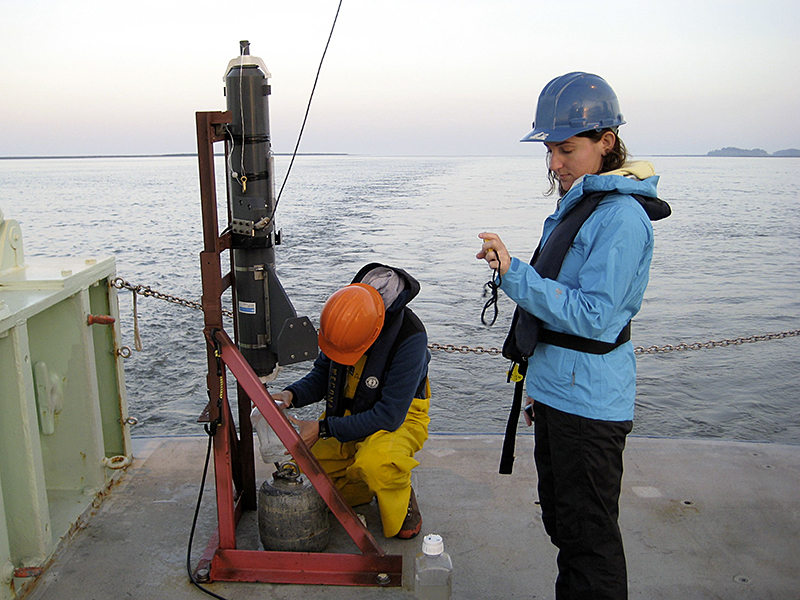Knowledge Transfer
Member Login
Recent Blog Posts
Views expressed are those of the author and do not necessarily reflect those of CMOP or OHSU. All content posted here must be consistent with OHSU's Acceptable Use of Computing and Telecommunications Resources policy.




 April 29. Loading day. I traveled to Oregon with graduate students Lindy Fine and Dong Yoon Lee yesterday. This morning with help from Joe Needoba we loaded a U-haul truck with equipment at OHSU in Hillsboro and then drove to Newport Oregon to meet the ship. We then spent the rest of the day loading a lot of equipment and supplies onto the R/V Oceanus in Newport, OR, and testing equipment and sensors. Murray Levine, Fred Prahl, and David Langler drove over from Corvallis to help set up our new 12L Owen Tube, which was fashioned from an externally-closed Ocean Dynamics horizontal niskin bottle (see picture). We deployed the new Owen Tube several times to work out our sampling routine. Later that evening we started setting up our amazingly heavy CTD frame, which is designed to handle the extreme currents in the Columbia River estuary without being washed away from the ship.
April 29. Loading day. I traveled to Oregon with graduate students Lindy Fine and Dong Yoon Lee yesterday. This morning with help from Joe Needoba we loaded a U-haul truck with equipment at OHSU in Hillsboro and then drove to Newport Oregon to meet the ship. We then spent the rest of the day loading a lot of equipment and supplies onto the R/V Oceanus in Newport, OR, and testing equipment and sensors. Murray Levine, Fred Prahl, and David Langler drove over from Corvallis to help set up our new 12L Owen Tube, which was fashioned from an externally-closed Ocean Dynamics horizontal niskin bottle (see picture). We deployed the new Owen Tube several times to work out our sampling routine. Later that evening we started setting up our amazingly heavy CTD frame, which is designed to handle the extreme currents in the Columbia River estuary without being washed away from the ship.


